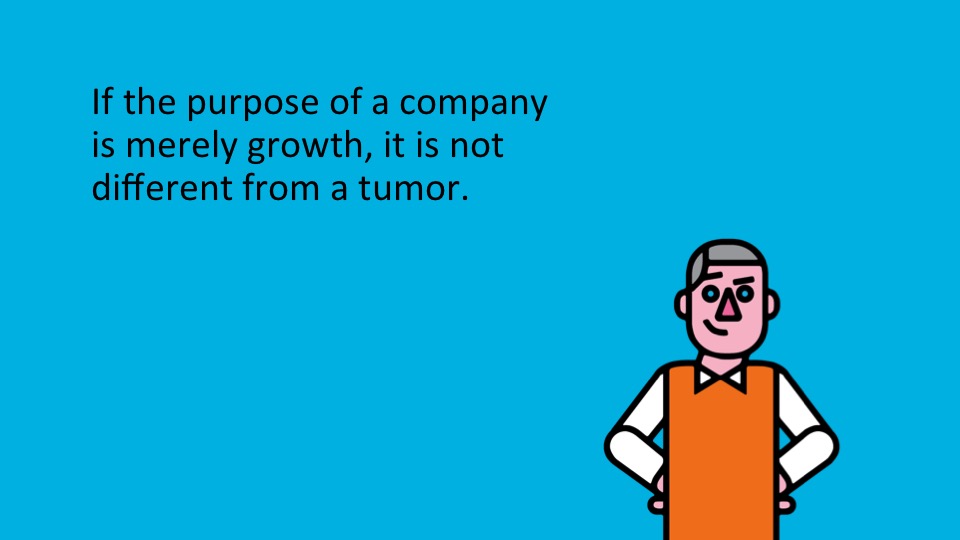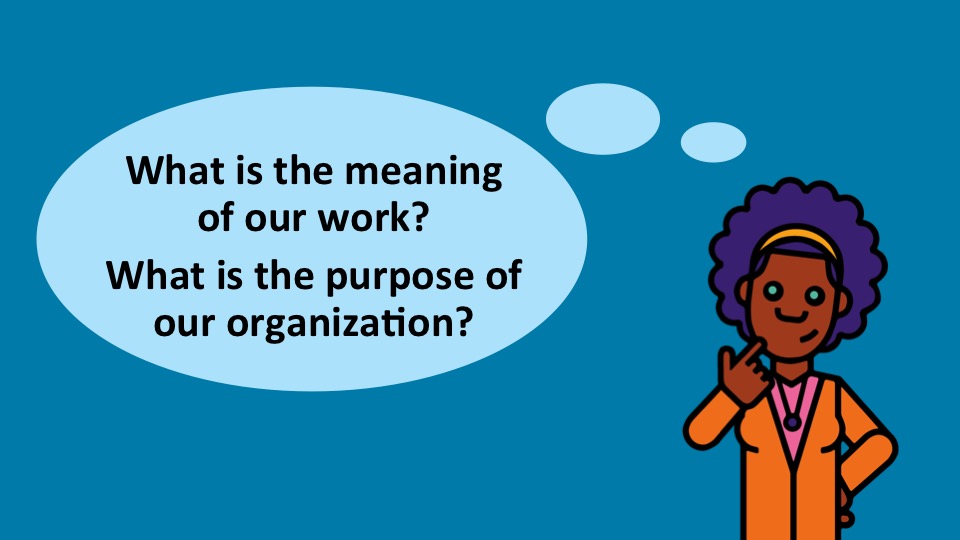by Jurgen Appelo
In organizations, systems consist of people, structures, and processes that operate together to make an organization “healthy” or “unhealthy.”
Wiki’s definition of systems thinking
Judging by Thinking in Systems, the writing of systems thinker Donella Meadows, we all live our lives according to our purpose.
#Purpose is deduced from #behavior, not from rhetoric or stated goals’
DanaMeadowsInst on Twitter
This means that, for many companies, purpose cannot be found on their websites, in their brochures, or in their corporate mission statements. Instead, purpose must be derived from behavior. In other words, the purpose of many companies is creatingwebsites, brochures, and mission statements full of corporate BS. That’s what they do. Therefore, fabricating nonsense is their purpose.
Enacted Purpose (Intrinsic)
Cyberneticist Stafford Beer, one of the pioneers in systems thinking, repeatedly said that the purpose of a system is what it does, or POSIWID for short. In my first book Management 3.0 I referred to this as the intrinsic purpose, while others call it the enacted purpose of a system.
The intrinsic or enacted purpose of a dog is to eat the remote control, bark at the neighbors, and chase tennis balls. The intrinsic purpose of a traditional organization is to treat people as replaceable parts, and publish lists of “corporate values” that nobody ever remembers or refers to. The enacted purpose of some teams is to do only what managers ask, with as little effort as possible, while trying to get paid more than last year.
If that doesn’t sound inspiring to you, it’s because it isn’t.
Espoused Purpose (Emergent or Assigned)

In an attempt to inspire themselves or others, many people, teams, and organizations come up with an alternative purpose which represents their intention, not their actual behavior. In Management 3.0, I have called this an emergent purpose when a person, team, or company assigns such a purpose to oneself. And I have called it an assigned purpose when it is imposed on someone or something else. Both emergent and assigned purposes are examples of espoused purposes. They’re about what we say we are doing, not about what we are actually doing.
In attempt to inspire themselves, many come up with alternative #purpose representing #intention
jurgenappelo on Twitter
For example, when a boy discovers that he loves dancing and decides to dance whenever he can, his enacted or intrinsic purpose is to dance whenever he can. One day, he may wish to become a professional ballet dancer and in his mind he sees himself on a stage in London performing for a live audience. When he starts to pursue this vision, we can say that this has become his emergent purpose. At the same time, maybe his father had another assigned purpose in mind for the boy, such as becoming a mine worker or a professional boxer. But as long as the boy is only dancing in the school gym, both his own emergent purpose and his father’s assigned purpose are merely espoused purposes. They reflect intention, not behavior.
The boy is neither a professional dancer nor a professional boxer. He’s just a boy dancing in the gym.
The three typical problems of purpose
In the example above, which some of you may have recognized as the story of Billy Elliot, you see three archetypical tensions that authors have used as storytelling patterns in thousands of books, movies, and musicals:
Purpose Challenge 1: A conflict between what is expected versus what is desired
Ok, the purpose of a working dog is usually assigned: guard the master’s territory, help physically challenged people to move around safely, or sniff out potential drug traffickers. But in the case of a child, it’s probably best to keep their purpose emergent. Few children appreciate being bossed around by their parents. For a team, on the other hand, purpose could be anywhere in between the two extremes of dictatorship and anarchy.
Also Read: Agile Scaling: Anarchists, Dictators, and Networkers – Forbes
Purpose Challenge 2: A journey of awareness from dissatisfaction to satisfaction
No matter whether a team’s purpose is assigned or emergent, it will need to be defined or discovered first. It took me many years to discover that I love understanding and creating ideas around organizations, management, improvement, and work-life related topics. It’s a matter of trying many things out, discovering what you love doing, and what clients are willing to pay for.
Also Read: Is EQ becoming the new IQ? The power of emotional intelligence
Purpose Challenge 3: A gap between what is espoused versus what is enacted

When you have figured out who should define the purpose for a team and what that purpose should be, you still have to address the problem of how: closing the gap between the intention and the actual behavior. After all, your intent of changing people’s lives is irrelevant when your behavior is just filling recycle bins with wasted sticky notes.
As a team, community, or company you may struggle with any (or all) of these three typical challenges.
What is your organization’s purpose?
Here is my challenge for you, as a person, team leader, company owner, or community manager:
Step 1. Pick a system and agree on who has the final say over the (espoused) purpose of it. Is it you? Is it someone else? Is it assigned? Is it emergent? Somewhere in between? Check out the agility scale for purpose, pick the right spot for you on the scale, and tell us what it is.
Step 2. Find examples of actual behaviors and achievements that you feel good about and that you’re proud of. Describe them. Collect them. Talk about them. Publish them. Mission statements have no value other than suggesting which stories and artifacts to look out for. Check out Management 3.0’s Purpose & Meaning Module for further inspiration.
Step 3. Make the decision to create and generate more stories and examples of you and your team, company, or community living up to your intended purpose. Are you unsatisfied with the outcome? Are you spending time on things that have no meaning? Are you not behaving as intended? Iterate back to Step One. Try a Work Expo to create a visual representation of this purpose at your office.
Listen to Sam interview Jurgen on this topic.
Do you have an exercise for espousing purpose? Tell us below!
Photo: Jordan Madrid (Unsplash)

